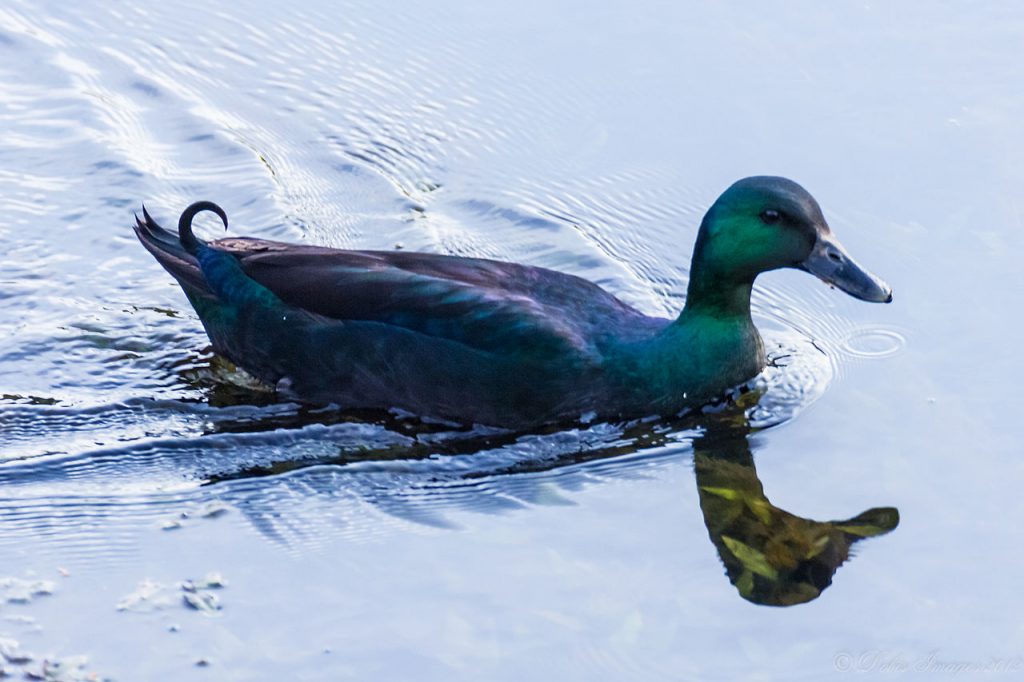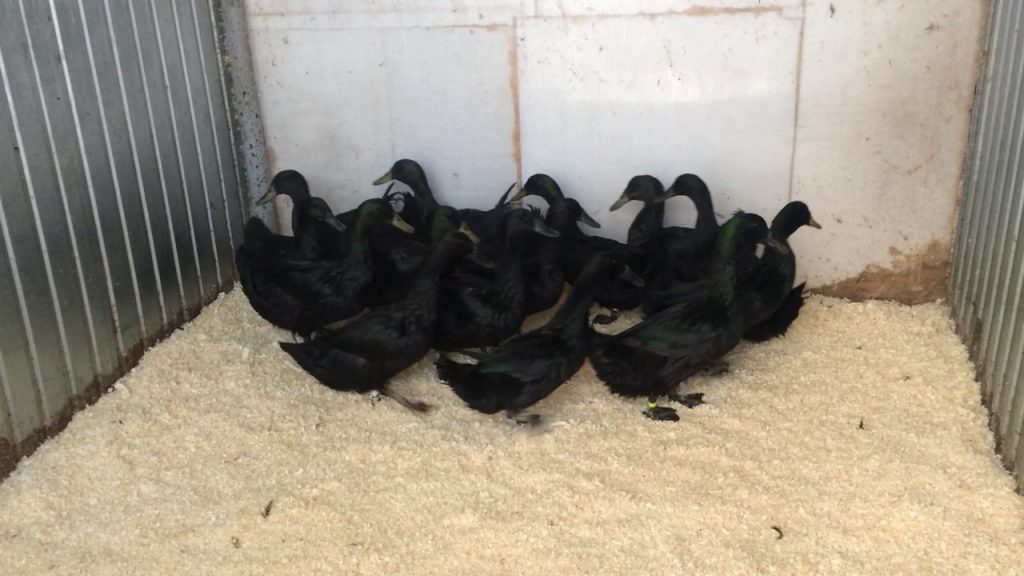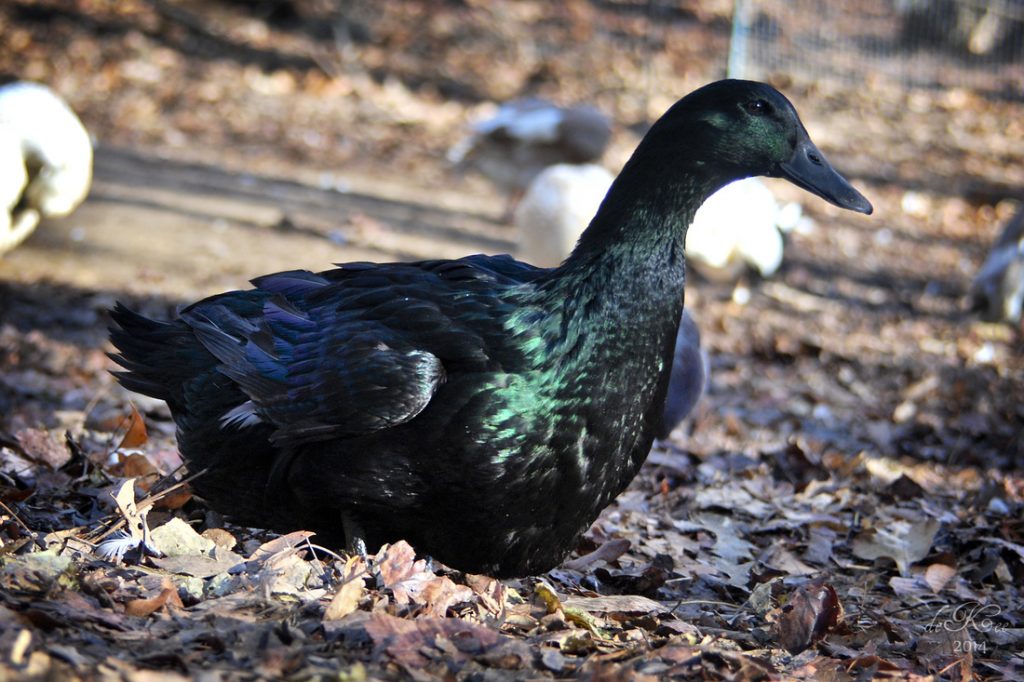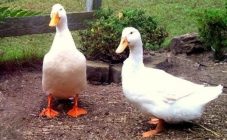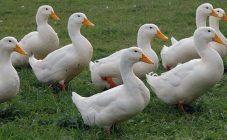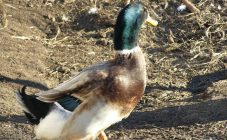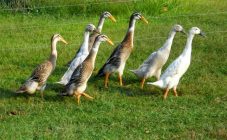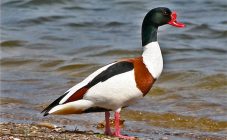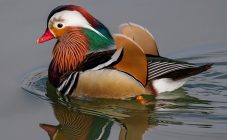Content:
Of all domesticated birds, the Cayuga duck is the least known and rare breed. The American duck was domesticated in the late 19th century and named after the longest lake in the vicinity of New York. During the flight to the winter quarters, Cerneti, wild birds, made a stop on it. Breeders of this state first crossed this incredibly beautiful bird with domestic ducks, and since then this species has become the most popular in the United States.
Characteristics of the breed
Cayuga takes leading positions in agricultural exhibitions for the beauty of plumage. Sometimes they are grown as a decorative decoration of a courtyard and are called coral. They will decorate any body of water with an exotic look. The predominant color is black metallic, but each part of the plumage shimmers in different tones. Glossy feathers sparkle with a delicate emerald color, bright green, there are blue-blue stains. The bright shine of the plumage in the sun resembles the color of the May beetle. The neck, from beak to breast, is painted with white blotches, similar to frost.
The color of females is not as bright as that of the male, more dark color prevails in it, the beak is purely black. The drake is distinguished by the bright color of the feather - rich emerald and azure shades, the beak is olive.
The drake is larger than the female, weighs about 4 kg, the duck is 0.5 kg less.
The Cayugu duck, when describing the breeds of other poultry, is distinguished by such a quality as a calm character - it rarely quacks, does not break the silence, and behaves peacefully. At the same time, she is a brave bird, is not afraid of noisy sounds, does not run away from the place of pasture. She is also distinguished by a peaceful character, cleanliness, always keeps a flock, scatters only in a pond.
The maintenance does not require special conditions, the duck easily adapts to climatic changes.
Description of the breed:
- body - strong, massive, horizontally located;
- neck - arched, strong, short, at the base - with a small tubercle;
- head - rounded-elongated, small in relation to the carcass, with brown eyes;
- beak - wide, flat, long;
- legs - black, massive, with membranes, widely spaced;
- tail - small, slightly raised;
- the wings are wide, tightly pressed to the body.
Beauty is not the main characteristic of the Cayuga, this breed belongs to the meat and egg row. Their meat, with a low percentage of fat, with excellent organoleptic characteristics, is successfully used in dietetics.
The egg production of the breed is average, a young individual can lay 160-170 eggs per year. Ducks rush in cycles of several months with short breaks. Eggs of unusual color are black, weighing 80-85 g. The color of the shell depends on the amount of egg production. The first eggs of the duck are black, then every time - lighter colors. At the end of the masonry season, the shell is greenish or light gray.
Growing features
Kayuga has preserved the biological characteristics of wild ducks, so the main thing for them is free range and access to an open reservoir. In the summer, it is necessary to enclose an aviary with a canopy. Under a canopy, the ground is covered with straw or boards, where ducks will take shelter from the summer heat and rain. If there is no natural reservoir, they place large, shallow containers of water. Grass must grow in the aviary.
For spending the night, equip a poultry house with all the rules of sanitary requirements:
- the walls are freshly whitewashed with lime;
- the temperature in winter is at least 6 degrees Celsius;
- it is necessary to provide ventilation and aeration of the room;
- the floors are covered with fresh sawdust or straw;
- there must be the required number of drinkers, feeders and nests.
Cayuga tolerate low temperatures well; they can be released into the open-air cage in winter after clearing the ground of snow and scattering straw over it.
Reproduction
In hot climates, ducks retain the ability to reproduce throughout the year. At moderate - they begin to lay eggs in March. It is important not to miss this moment and to show the duck a place for laying, otherwise it will rush in inappropriate places and hide the laying.
Breeding Cayuga ducklings is not difficult: as soon as more than 10 eggs are collected in the nest, the bird's hen instinct manifests itself. If this is not part of the owner's plans, the eggs must be removed from the nest periodically. If breeding is planned, eggs can be added to the nest and left to incubate.
The embryo development time is 4 weeks, but the first ducklings begin to hatch 2-3 days earlier. Cayuga has a highly developed maternal instinct, she follows the chicks well and, if the female incubates the clutch, she requires the main care. She needs to be fed on time and provided with a walk for bathing and toilet.
If raising chicks is incubator, it is important to follow these rules:
- monitor the temperature regime - it should be 38 degrees Celsius;
- eggs are laid out in an incubator with a sharp tip up;
- turn eggs according to the schedule;
- cool the incubator four times a day, for 10-12 minutes. turn off heating.
Feeding
Ducklings are fed 5 times a day with fortified foods:
- chopped boiled eggs, finely crushed shells;
- cottage cheese;
- kefir, milk mixed with porridge;
- nettles, dandelions and other herbs;
- for good growth of chicks, mineral supplements and vitamins are added;
- compound feed is introduced into the diet after 3 weeks of age.
Feeding the Cayug ducks is not difficult - the main part of it consists of a variety of greens, crushed wheat, corn and various cereal mash, which are steamed in milk or water. For better work of the stomach, sand is added to the feed, and chalk is added to strengthen the bones.
The daily diet of a bird is:
- 10 days - 50 g;
- 20 days - 140 g;
- 30 days - 250 g;
- 40 days - 400 g;
- 50-60 days - 500 g.
Ducks are a herbivore bird, quickly gaining body weight, even with a small amount of food. From animal products, the Cayuga duck loves snails, caterpillars, slugs. Sufficient weight for slaughtering poultry gains in 2 months. Ducks are often given food 5 days before slaughter. If ducks are not slaughtered, it can live up to 20 years.
Diseases
Cayuga is a species of ducks that is resistant to many diseases. But in case of poor sanitary condition of the premises, from dirty water or poor-quality feed, such diseases can develop:
- hepatitis of viral origin - young ducklings are ill;
- coccidosis - adult ducks are ill, the infected bird is disposed of;
- aspergillosis is a dangerous fungal disease, the meat of a sick duck is unsuitable for food;
- salmonellosis;
- avitominosis, goiter disease - causes a lack of vitamins.
Good nutrition and regular cleaning is the best prevention against diseases in ducks.
Advantages and disadvantages
The Cayuga duck has become not only America's favorite poultry. Due to its advantages, this breed species is successfully grown in households and farms in many countries, and Russia is no exception. Here, individuals of Cayuga began to appear with feathers painted in a red color.
Benefits:
- excellent taste of dietary meat;
- duck down and Cayuga feathers have heat-insulating properties and lightness, a product made of its down will always look airy;
- do not need shepherds, they find their way home;
- if the ducks are released into the garden, they will destroy weeds, slugs and other harmful insects, they do not touch the beneficial crop, unlike chickens;
- unpretentious in food;
- if there is no open reservoir, a small pool of water is enough for them;
- high survival rate of young animals.
Disadvantages:
- relatively low body weight;
- after plucking, black hemp is visible on the carcass.
For those who have decided to breed poultry for the first time, Kayuga breeding will not cause any trouble. A beautiful, prolific bird will not only be a source of food, but will also bring a lot of positive emotions to its owner.
